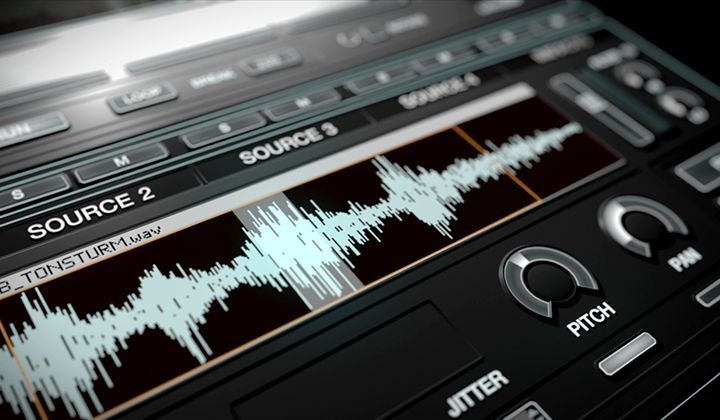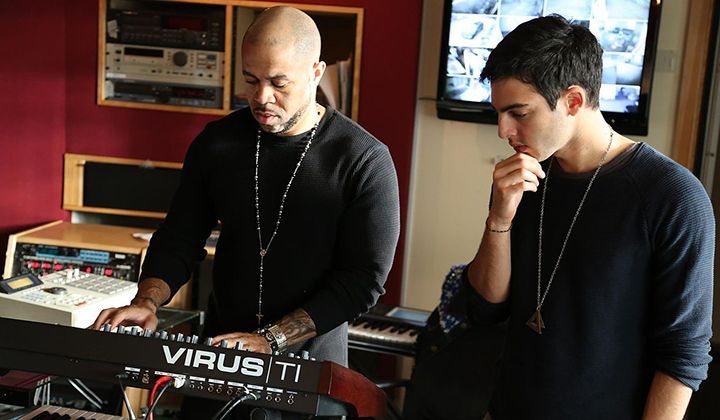This guide serves as a resource that offers five methods used by musicians to help you keep your head in the game and work through creative obstacles.

Creative Block
Whether you’re a music producer or a singer/songwriter, it’s likely you experienced creative block at some point.
The life of a musician is never smooth sailing. There will be times when you struggle to find the inspiration to start a new project or become completely devoid of ideas, making it hard to find a path towards the finish line. Music production is full of pitfalls, and it’s easy to head down the rabbit hole of endless fine tweaking or become overwhelmed by the limitless options and infinite possibilities. It’s ok to feel the weight of these many obstacles; it’s part of the process.
Although these common occurrences can become frustrating, there are several methods musicians use to motivate their creative flow and jump back on the productive train. The following guide offers some tried–and–true approaches used to overcome creative block.
Take Breaks

There will be times when you feel exasperated but are locked in and determined to keep working. Forcing yourself through a session without taking breaks can become counter-productive. Breaks are healthy and necessary to recharge your creative energy.
Whether it’s 30 minutes, a day, a week or a month, take some time away from the studio to clear your head and not think about music. Taking walks has long been a proven creative block-breaker, but feel free to enjoy any of your favorite activities. Catch some fresh air and jump back in the pilot seat when you feel more prepared to work productively.
Change Gears

There is no shortage of things to work on throughout the process of creating music. There are several different things you can delve into such as sound design, recording samples, mixing, arrangement, and more.
If you’re feeling stuck, change course and experiment. Fire up a synth, free yourself from any restrictions, and go wild creating new sounds. This technique is an excellent way to become more familiar with your instruments and lets you create freely without any pressure worrying about what you’re doing is right or wrong. It’s also very poseable that the sounds you make will inspire new ideas. Remember to save your synth presets to use in future projects.
The same goes for recording samples. Grab a recorder and adventure around capturing all types of unique sounds no one else has. Be creative and build a collection of material for various uses. Also, try dropping some samples into your DAW and mess around with them in different ways. Let loose, mangle, layer, and process the samples to create something entirely new.
Music Deconstruction

One of the best ways to up your music production game is to analyze and deconstruct the music you enjoy. Learn from other people’s music by interpreting the different elements that make up a song and then use what you have learned in your productions.
Breaking down the music that inspires you will certainly boost musical ideas and improve your ability to understand the mechanics of music production. With practice, you will be able to identify different instruments, song structure, drum patterns, melodies, harmony, and more. This highly valuable learning approach is essential in strengthening the fundamentals such as arrangement, sound design, music theory, and songwriting.
For example, practice your arrangement skills by first dragging a reference tune into your DAW. Then identify all the musical parts such as verse, chorus, bridge, breakdown, intro, outro, drop, etc. Use locators or slice up the sections and give them all different colors to differentiate them. Doing this will give you a road map to follow when arranging your mix.
Boost your sound design skills by setting a loop brace around a part of a song such as a bass solo and then load up one of your instruments to recreate the same sound. This technique helps you to learn your tools and also serves as an excellent way to train your ears.
Same goes for increasing your music theory and songwriting knowledge. Set a loop around a dope sounding chord progression and try to recreate those same chords or musical patterns. Doing this will help you recognize the different notes in each scale, learn different ways to write chord progressions or melodies, and figure out how your favorite artists created the particular elements that excite you.
The goal of deconstructing other peoples music is to help you establish an understanding of the various production techniques used by artist’s that influence you. Take that newly discovered knowledge and apply it to your own creative style.
Collaborate

One of the greatest things about creating music is its collaborative nature. When your inspiration is stalling, bring other people into the mix.
Most producers these days often work from their home studio or on the road in solitary, freedom is one of the appeals of music production. However, working solo at times has its downfalls.
Working with someone else can be a great way to draw new ideas. It’s an excellent way to gain insight into how other people work. You may learn how other musicians approach things differently than you which can make you rethink your methods.
Even if you’re not stranded on creative block island, it’s still good to reach out to your mates to bounce ideas, critique or edit your work, and ask questions.
Listen to Music

One of the easiest ways to keep inspired is to curate a collection of tunes that serve as a reminder of why you’re making music. Go back to your roots and listen to the music that excites your creativity or explore new music to gain fresh ideas. This approach helps you get your head back into the right creative space.
It’s easy to get caught up on various things that cause us to lose focus. Instead of forcing yourself to work through a session, take a break and clear your mind of that tedious loop pattern by soaking in music that will kick start excitement and motivation.
Also, try listening to several different types of music you may not be into like classical, jazz, country, etc. Expand your music palette and avoid limiting yourself to one genre. Pay close attention to the arrangement, time signature, instruments, and techniques used to spark ideas that you can fuse into the style of music you’re trying to create.
Learn The Art of Flow
Icon’s unique Art of Flow course empowers artists to unleash their maximum creative potential. Learn to overcome writer’s block and continue the flow of creativity throughout the creative process.

Turn your passion for music into a Profession: Learn more about our Music School Programs!
MORE ARTICLES FROM THE ICON BLOG

FIND YOUR SOUND, HONE YOUR CRAFT:
Are you ready to turn music into a career? ICON prepares students to become music producers, composers, performers, recording artists, professional DJs, and entrepreneurs in the entertainment industry. Click below to get information about our award-winning programs:

